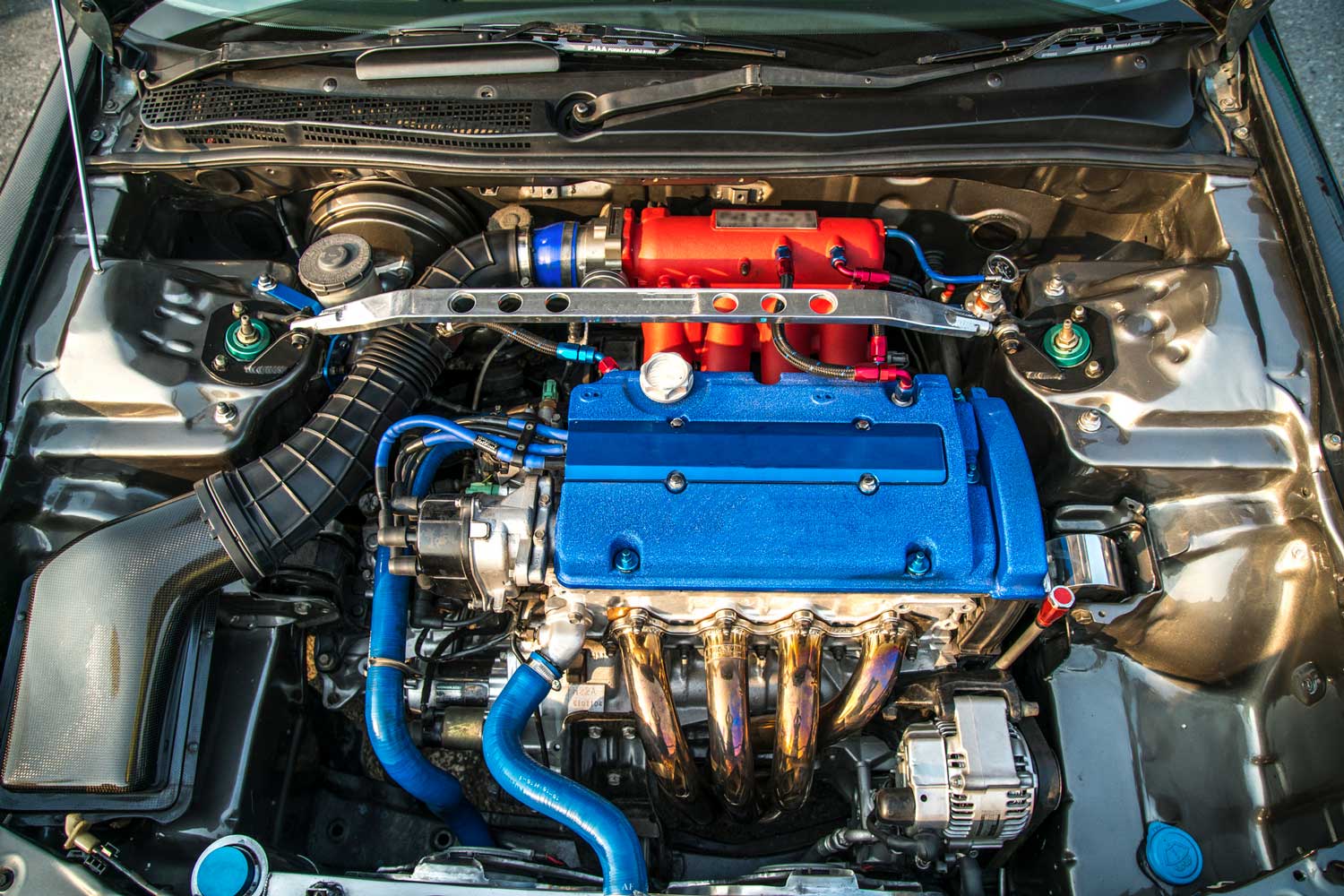How To Clean Your Car's Engine Bay
Sprucing up the greasy bits can breathe new life into your car.
 Getty Images
Getty Images
Article QuickTakes:
When dust and grime find their way under your car’s hood, they turn its once brochure-fresh engine bay into a tired-looking place. A cursory clean up every once in a while can help keep things looking nice, which also means it will be easier to spot leaks or other problem areas should they arise. Here’s how to clean an engine bay.
Choose the Right Products
There’s a big difference between cleaning your car’s engine bay and detailing your car’s engine bay. The latter implies paying close attention to every nook and cranny for the kind of beautiful shine that might win you points at a car show.
Most drivers will instead take a simpler cleaning approach, which is where a basic degreaser spray can come in handy. Griot’s Garage makes a degreaser that runs around $12 in spray bottle form, while Adam’s Polishes has a $10 multi-purpose degreaser that it claims is eco-friendly.
Degreasing sprays pair well with a soft-bristle brush, which can be used to agitate dirty surfaces. Chemical Guys sells an $8 boar’s hair brush that can be used on a variety of surfaces, though grease contamination means you’ll want a different brush for, say, the interior.
Otherwise, all you need is microfiber towels, tape, and plastic bags.
How to Clean Your Engine Bay
First off, don’t start with a hot engine. At a minimum, let the engine cool for 15 or 20 minutes to reduce surface temperatures so that you don’t burn yourself or risk cracking hot plastics by exposing them to big temperature swings.
Then disconnect your battery’s negative terminal using a wrench. Engine bays are designed to get damp—a little rainwater will inevitably find its way in, after all—but they are not intended to be soaked with high-pressure water. Look closely for any major electric components, such as a fuse box or computers. Gallon- and quart-size plastic bags can be secured over these items with tape to make them reasonably watertight.
Once those electronic components are protected, spray degreaser on areas that look particularly dirty and then gently agitate especially greasy or dusty areas with a brush. You can also use the degreaser and brush on the underside of the hood, even if there is an insulation pad.
After giving the degreaser a few minutes to activate, it’s time to use your hose. A garden hose with a spray nozzle will do the trick well enough, or you can use a pressure washer set to a low setting.
Protect Your Work
An engine bay dressing such as the $18 aerosol spray from Griot’s Garage can be used as a final touch that can protect surfaces, too.
Unless you spend a lot of time on dirt roads, you probably don’t need to schedule a regular engine bay cleaning. Still, when poking your head under the hood periodically to check fluids, take a look around the engine bay. If it looks dirty, perhaps block off an hour or two for another scrubbing.



